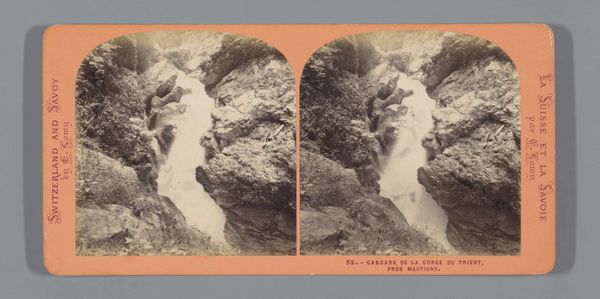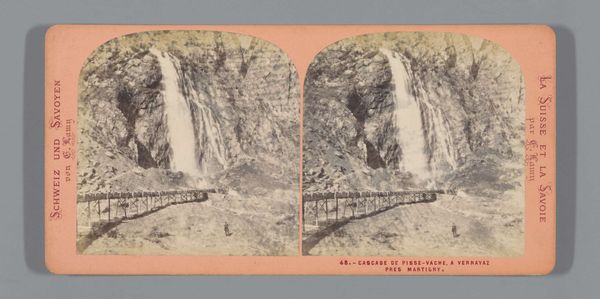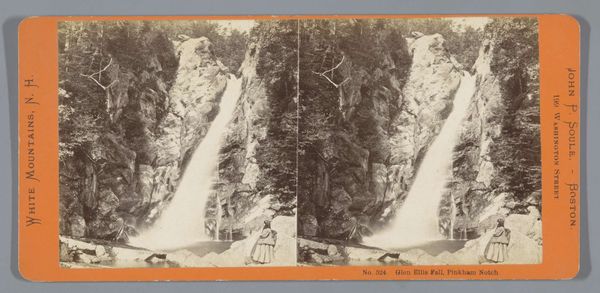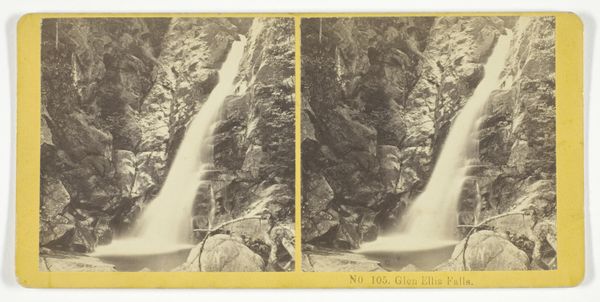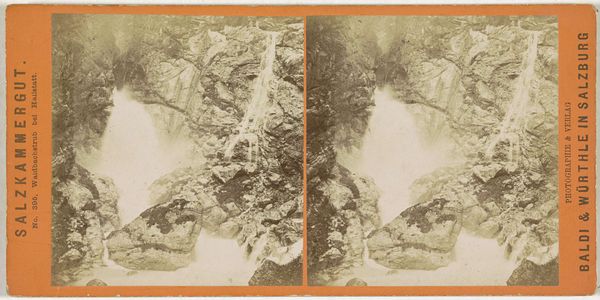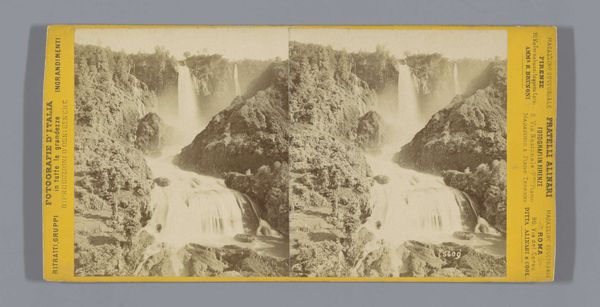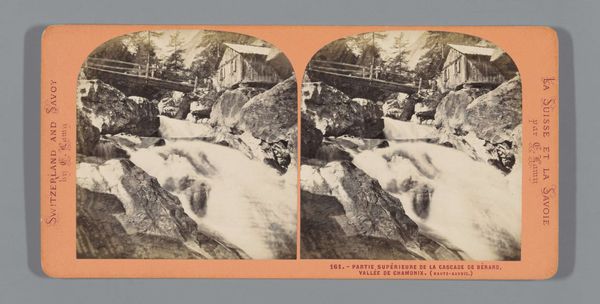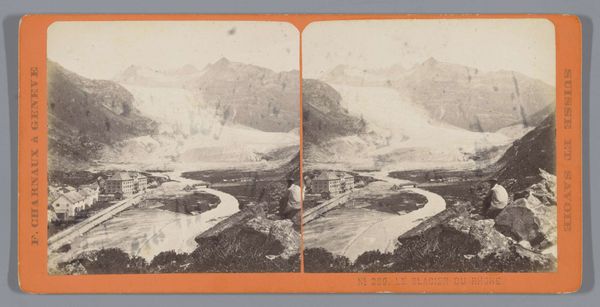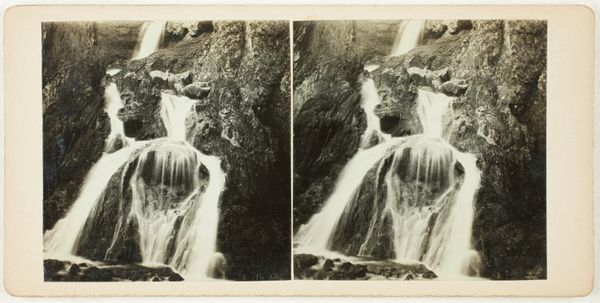
Dimensions: height 85 mm, width 170 mm
Copyright: Rijks Museum: Open Domain
Curator: This stereoscopic card shows us the Pissevache waterfall, a dramatic vista captured sometime between 1860 and 1880. E. Lamy is credited as the photographer. Editor: My initial impression? Overwhelming. The waterfall dominates the scene, an unrestrained force set against rugged rock. Curator: These stereoscopic cards gained popularity during that period as they provided accessible images for people who did not travel to these remote landscapes. Its reproduction democratizes imagery and experience. Editor: Absolutely, but it’s not merely a depiction. It participates in and propagates the cultural narrative around the sublime, imbuing nature with almost mythical power and setting the stage for nature’s tourism. Note how small the figures are by the bottom: clearly designed to reinforce the feeling of immensity! What a symbolic hierarchy. Curator: Considering this was produced at a time of expanding industrialisation, the awe-inspiring scale may be read as both celebration and warning. The sublime also allowed for the affirmation of colonial power as the 'conquering' and 'civilizing' Western subject observes such scenes of beauty and danger from a distance. Editor: Exactly, framing the falls through a romanticized gaze serves to pacify their unruliness, even naturalizing colonial authority. There is even something performative about framing a romantic gaze for audiences: what are we as audiences made complicit with? Curator: Looking at it now, the romantic interpretation appears somewhat imposed, revealing the social conditions of the art and of art's encounter. This card isn’t just a neutral recording, is it? It's a curated perspective, subtly reinforcing particular cultural viewpoints through the power of image. Editor: No, not at all! The tension between reality and the constructed image really adds another complex layer to consider, doesn't it?
Comments
No comments
Be the first to comment and join the conversation on the ultimate creative platform.
